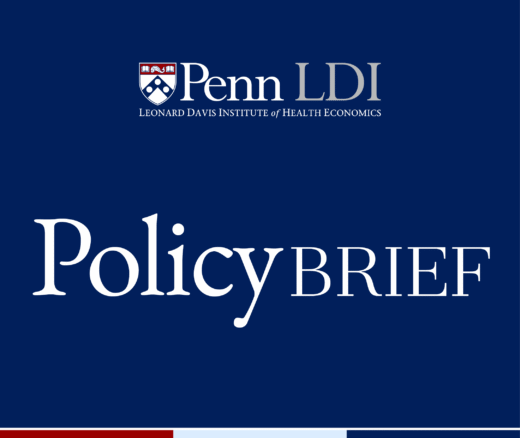
Reforming Long-Term Care Policy
Lessons from the Past, Imperatives for the Future
Improving Care for Older Adults
Blog Post
Many older adults who qualify for Medicaid, are 55 years of age and older, and live with disabilities have the cost-free option of enrolling in a so-called PACE program. Short for the Program of all-Inclusive Care for the Elderly, PACE offers community-based care and services to nursing home-eligible older adults so that they can continue to live in their communities. Individuals enrolled in PACE receive comprehensive, coordinated health and social services, including prescription drugs, doctor care, transportation, home care, check-ups, and hospital visits and nursing home stays when necessary.
PACE isn’t available everywhere, but its availability is expanding (~55,000 enrollees in 144 programs across 30 states). In areas where it’s an option, enrollment in PACE has numerous benefits. As intended, most individuals who opt into the program are able to live safely in their communities and stay out of nursing homes. Studies have shown that, compared to individuals who opt out of a PACE program, those who choose PACE not only have fewer and shorter nursing home stays, but also decreased rates of hospitalization, greater overall survival, lower rates of depression, and increased social interaction.
What enables PACE programs to consistently deliver high quality, equitable care to older adults? The answer: it’s the payment model. PACE programs offer a comprehensive, coordinated set of health and social services that enable nursing home-eligible older adults to continue to live in their communities. To achieve this goal, PACE programs receive monthly payments from Medicare and Medicaid to cover the entirety of the care for each member, enabling a focus on prevention of costly and often avoidable hospitalizations and nursing home admissions.
Still, despite the proven advantages of PACE, many older adults who qualify for PACE and live in a PACE-covered area do not enroll in the program. We wanted to learn the reasons why. We were particularly focused on Black and Latino older adults, who have seen a disproportionate rise in nursing home use.
As we reported recently in the Journal of Aging & Social Policy, our team examined how Black and Latino older adults engage with PACE programs and what facilitated or impeded their access to and enrollment in PACE programs. Our findings revealed both facilitators and barriers to enrollment in a PACE program.
Facilitators
Barriers
These findings point to potential strategies that may increase access to PACE and decrease inequities in the quality of long-term care—such as improved communication about the program, provision of culturally appropriate materials, engagement with community health care providers and local aging organizations and expanded access to PACE program, beyond Medicaid beneficiaries.
Such efforts are more than worthwhile given the growing older adult population in the United States. The success of PACE offers policymakers strong evidence for a funding mechanism and program that holds promise for broader application in more communities across the United States. We hope that these findings will help guide future steps to reduce barriers and enhance access to PACE programs by older adults from racial and ethnic minoritized groups and all other eligible older adults.
The study, Minority Older Adults’ Access to and Use of Programs of All-Inclusive Care for the Elderly, was published in the Journal of Aging & Social Policy on February 7, 2022. Authors include Jasmine Travers, Sara D’Arpino, Christine Bradway, Sarah J. Kim, and Mary D. Naylor.



Lessons from the Past, Imperatives for the Future

Technology Helps Older Adults Stay at Home—But May Delay Necessary Transitions to Higher Levels of Care

Her Transitional Care Model Shows How Nurse-Led Care Can Keep Older Adults Out of the Hospital and Change Care Worldwide

Direct-to-Consumer Alzheimer’s Tests Risk False Positives, Privacy Breaches, and Discrimination, LDI Fellow Warns, While Lacking Strong Accuracy and Much More

New Therapies Inspire Hope, Even as Access and Treatment Risks Continue to Challenge Patients and Providers

Penn LDI Senior Fellow Yong Chen Is an MPI in the 10-Institution NIA Undertaking

Precision Diagnostics Give Patients Clearer Answers About What Drives Cognitive Impairment

Findings Suggest That Improving Post-Acute Care Means Looking Beyond Caseloads to Nursing Home Quality